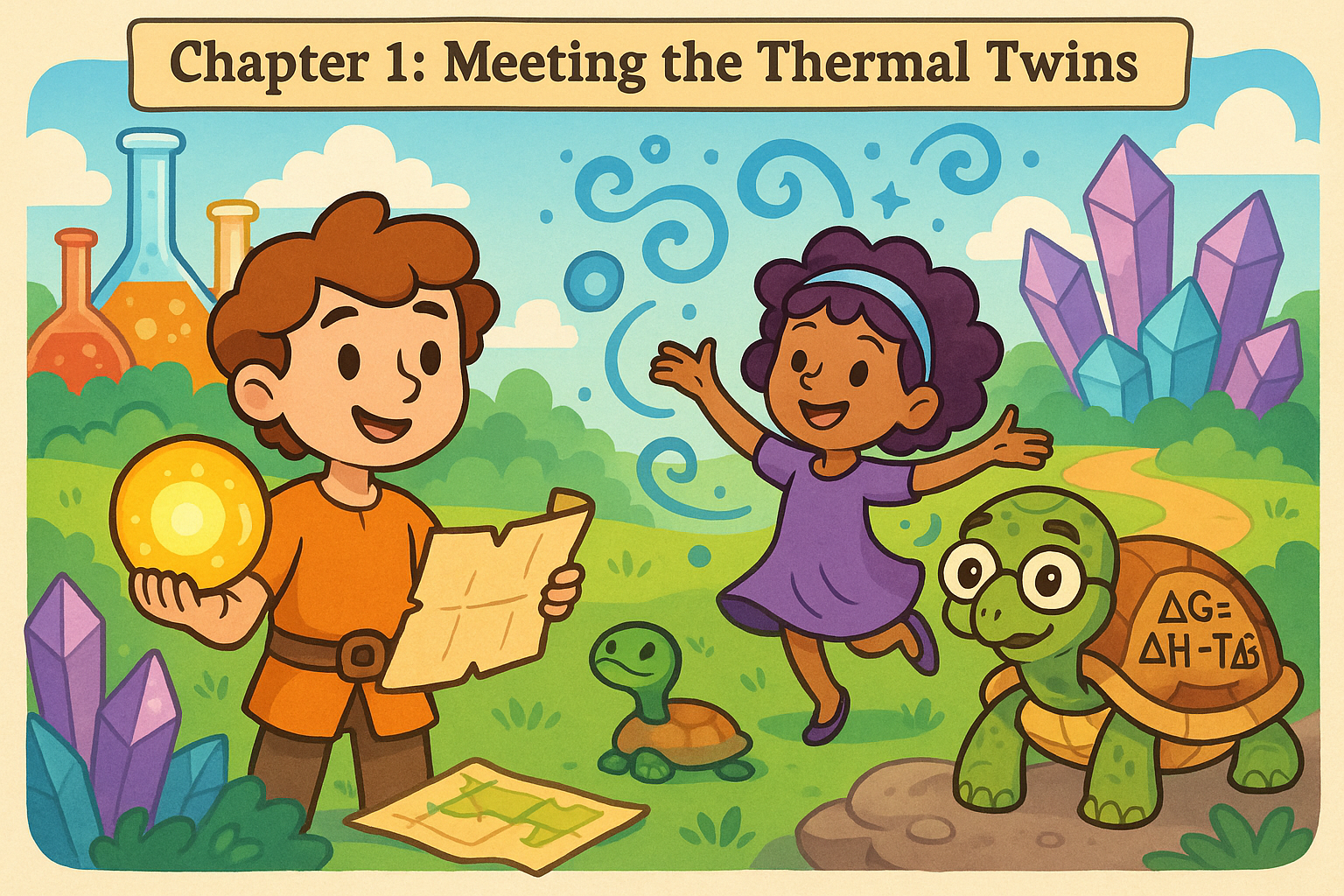Chapter 1: Meeting the Thermal Twins
Our adventure begins with two special siblings...

In the colorful land of Chemisphere Kingdom, two siblings were known far and wide: Enthalpy, a warm-hearted character who always carried a glowing orb of energy, and Entropy, a free-spirited soul who loved creating beautiful chaos wherever they went.
"We need to find the perfect picnic spot," announced Enthalpy one morning, holding up a map. "Somewhere with the lowest possible energy."
Entropy twirled excitedly. "But it should also have lots of possibilities for arranging our picnic blanket and food!"
Just as they were about to set off, a wise old turtle with a shell shaped like an equation poked his head out from behind a rock.
"I am Gibbs the Guide," the turtle said slowly. "And I can help you find what you seek. But remember, the perfect spot depends on both the heat energy you bring and the disorder you create—and how hot the day is!"
Gibbs Free Energy
Gibbs free energy (ΔG) tells us if a reaction will happen spontaneously. It combines enthalpy (ΔH, heat energy) and entropy (ΔS, disorder), along with temperature (T).
Common Questions:
What is Gibbs free energy?
Gibbs free energy (G) is a thermodynamic potential that measures the maximum reversible work that may be performed by a thermodynamic system at a constant temperature and pressure. The change in Gibbs free energy (ΔG) determines whether a process will occur spontaneously.
Why is ΔG important?
ΔG tells us the direction in which a chemical reaction will proceed. If ΔG is negative, the reaction is spontaneous. If ΔG is positive, the reaction is non-spontaneous. If ΔG is zero, the reaction is at equilibrium.
How do enthalpy and entropy relate to Gibbs free energy?
Gibbs free energy combines enthalpy (ΔH) and entropy (ΔS) in the equation ΔG = ΔH - TΔS. This shows that both energy transfer and disorder contribute to whether a process will occur spontaneously.